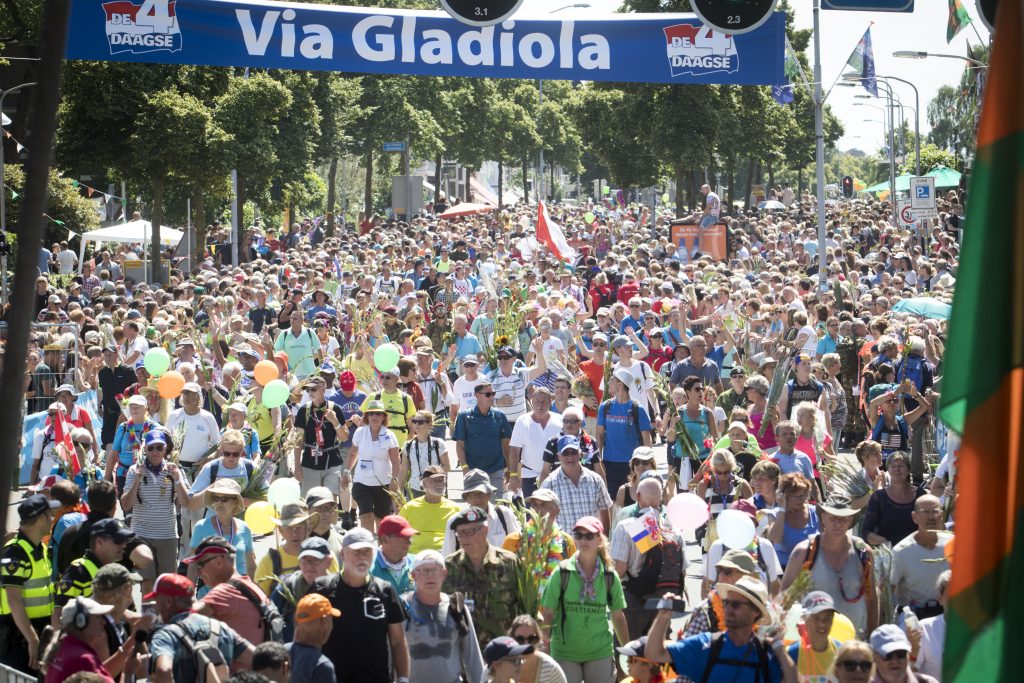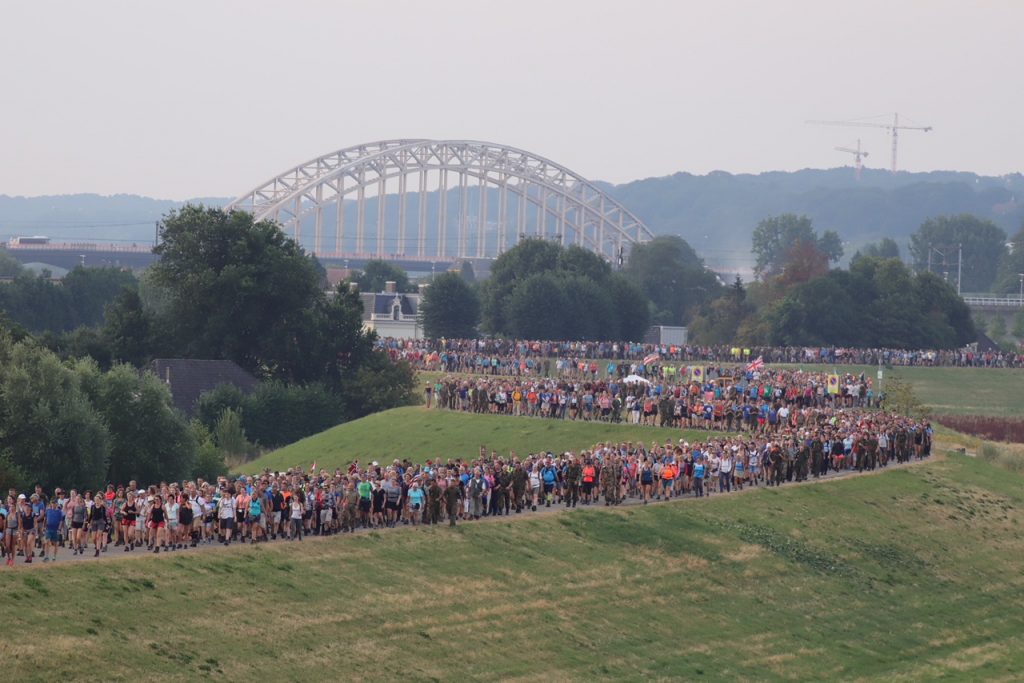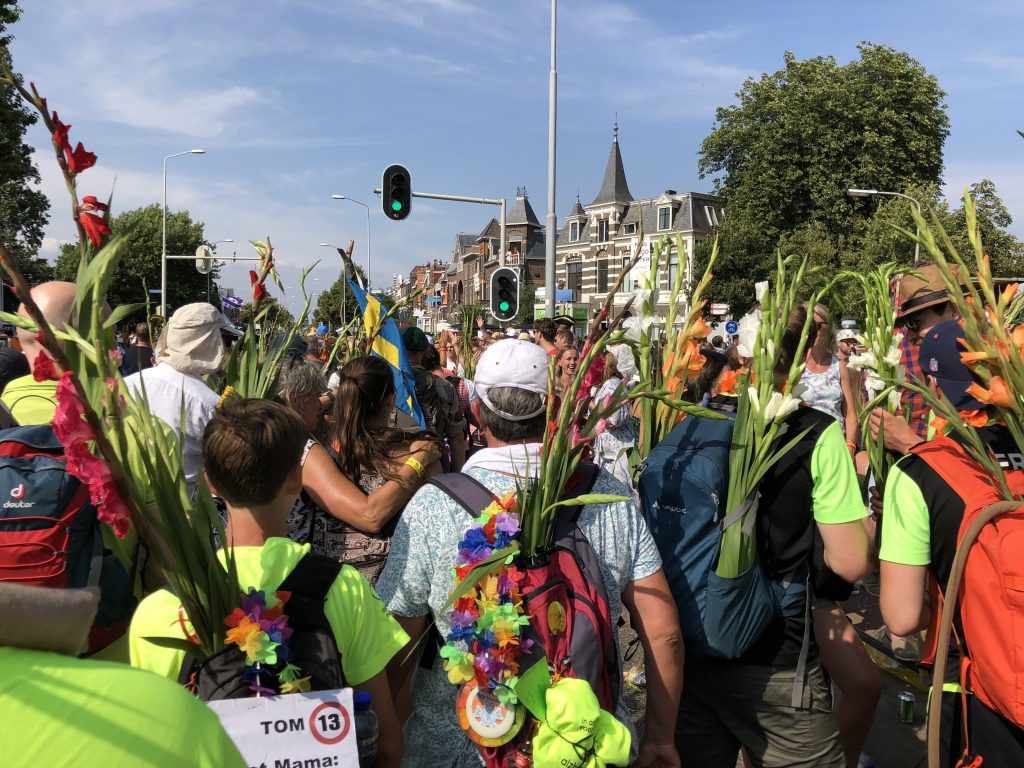
Having repeatedly reported on the Dutch people’s preference for deep-fried delights on harlekin.blog, I would now like to address the issue of how the citizens of my adopted country manage to keep fit despite these temptations.
From my observations, I can say that this must partly due to the fact that cycling is still extremely popular in the Netherlands, even in sub-optimal climatic conditions. All manner of more or less roadworthy versions of child seats, child trailers, etc. are to be seen often with mothers or fathers and three small children distributed around the bike.
For daily short distances, for example to the railway station to continue the journey by train, there is usually an additional, rather ramshackle bike, which with a bit of luck will not be stolen thanks to its ugliness. (And even if it is, it’s not the end of the world.)
On the other hand, there is a sporting phenomenon in the Netherlands that I have never encountered outside this beautiful country: the “Vierdaagse”. There are walking vierdaagsen, cycling vierdaagsen and swimming vierdaagsen, and as the name suggests, demanding the same sporting exertions are made on four consecutive days. The level varies depending on the event: there is the day-long walking vierdaagse with different distance requirements from 20 km upwards, or the evening vierdaagse for the whole family, where 5, 10 or 15 kilometres are hiked on all 4 evenings. There is a lot of singing at family events – preferably special endurance songs that speed up the pace and where the text is secondary (“Wij zijn er bijna… (We’re nearly there)” or – my personal favourite – “Potje met vet… (Little jar of fat)”).
Swimming on four days usually involves 250, 500 and 1000 metres, depending on the age of the participants. The cycling distances vary between 30, 45 and 60 kilometres, depending on the organiser. There are many different variations, but all have one thing in common: a day’s break in between is not possible!
The first four-day walking event took place in 1909 in and around Nijmegen as a kind of endurance exercise for the military. Over the years, the event has become increasingly popular with civilians too. The Nijmegen Vierdaagse is the country’s largest and best-known internationally – in 2019 about 43,000 people took part! And the route is really not for wimps – there are 30, 40 or 50 kilometres of walking every day, depending on your age.

I find 50 kilometres even on the bicycle demands respect, I don’t even want to think about hiking. And many participants are even able to party in the evening after the march!
In Nijmegen with its thousands of hikers, the city is one big festival on these four days. Every year, the city puts on a top logistical and organisational performance in terms of accommodation and hospitality. There are families who, already in the second generation, always host the same group of foreign hikers in their attic – this is how international networks are created!
The last part of the route leads along the “Via Gladiola”, where hikers are welcomed with gifts of gladioli. And, of course, there is also a medal when you have made it!
We would like to thank the “Stichting Internationale Vierdaagse Afstandsmarsen Nijmegen” for the beautiful photos from Vierdaagse 2019!

Epilogue
I must point out that there is of course also a winter alternative to vierdaagsen: the Eleven City Tour!
The trek is a 200 km long skating competition on natural ice passing through 11 Frisian towns. There hasn’t been one since 1997, as the winters weren’t cold enough. But the Dutch raise their hopes again every year. And should there be another Eleven-City-Tour next winter, I promise you a detailed report!
Original text: BBR
English translation: BCO
Bildquellen
- 17vr21 Ger Loeffen 4: Stichting DE 4DAAGSE - Ger Loeffen
- 18di17 Ger Loeffen 6: Stichting DE 4DAAGSE - Ger Loeffen
- 18vr20 Carliet Wortelboer 1: Stichting DE 4DAAGSE - Carliet Wortelboer

